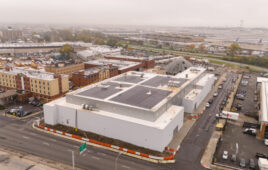Sage Energy Consulting will work with the Judicial Council of California (JCC), on an investment in solar power and energy storage.
The JCC plans to install rooftop solar panels, solar carports, and batteries across 43 potential locations to enable its courthouses to generate enough solar power to cover a portion of their routine energy needs.
Sage will evaluate the 43 sites already identified, and provide procurement support, preconstruction, construction and post-construction management and commissioning support. Power Purchase Agreements may be negotiated to lock in the price of the resulting solar power and power resiliency services.
As part of the job, Sage will explore the best ways for the Judicial Council to keep critical services running even when grid power goes down.
The Judicial Council provides leadership and administration of California’s judicial system, with the aim of improving the quality of justice on behalf of the public.
“We expect more judicial districts and other public facilities will be following suit in California and other places especially vulnerable to power outages such as the southwest U.S., Hawaii, Long Island and coastal Maine,” said Russell Schmit, Sage’s chief operating officer.
News item from Sage Energy Consulting





It has been a burgeoning practice since the late 1980’s into now, that Military bases have been chasing resiliency for decades and it has trickled over into community and public service entities. We are seeing news of schools, hospitals, fire houses, community centers that can be used as emergency shelters adopting not only solar PV, but micro-grids for resiliency. The tough job is to determine the “most efficient” use of these assets on a daily basis. The possible “standardization” of energy generation and overall capacity of say 6 hours of energy storage could become the new normal and allow these entities to “island for up to six hours” during brownouts or rolling blackout periods.
As costs for an “installed” kWh of energy storage comes down, one can make decisions of just how large a system one needs and can effectively use. For example one could have a Fire Station or Library that could run most of the time off of solar and a 60kWh backup battery. Yet one might figure out to install a 100kWh battery pack to allow one to extend resiliency in case of the rolling blackout or PSPS invoked to help prevent wildfires. At one time, the solar PV system was “calculated” to the razor’s edge to get the best cost benefits over time and best ROI. You can still do that or prices for panels, installation/racking systems prices have come down over the years to allow one to over design their system for a future of energy storage, EV charging and interactive grid electricity buying and selling. The options are expanding, even to the residential homeowner’s. What used to cost $50k 15 years ago, would be a robust solar PV and micro-grid system that could power the home most of the time for the same $50k spent today.